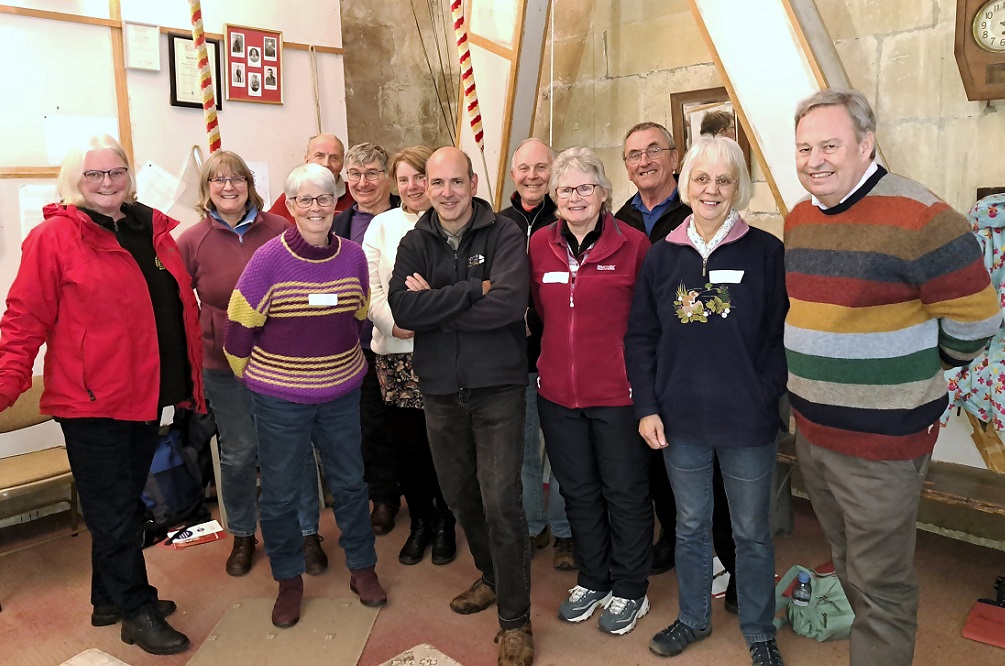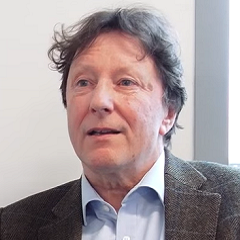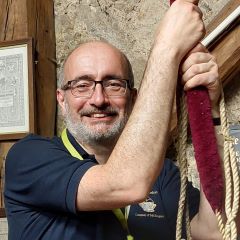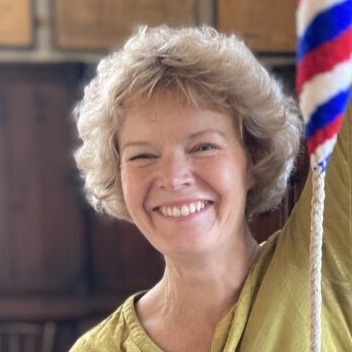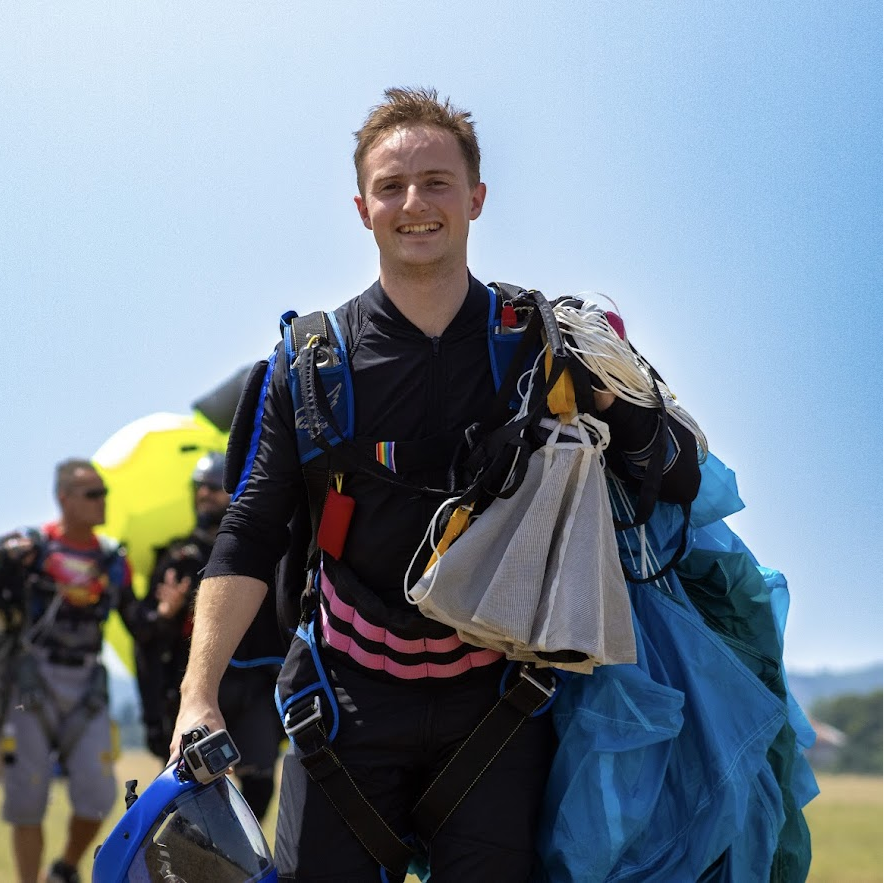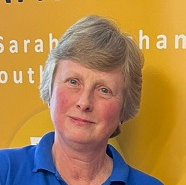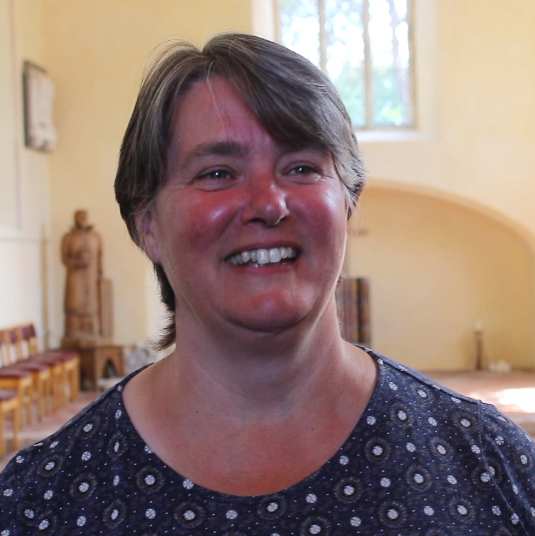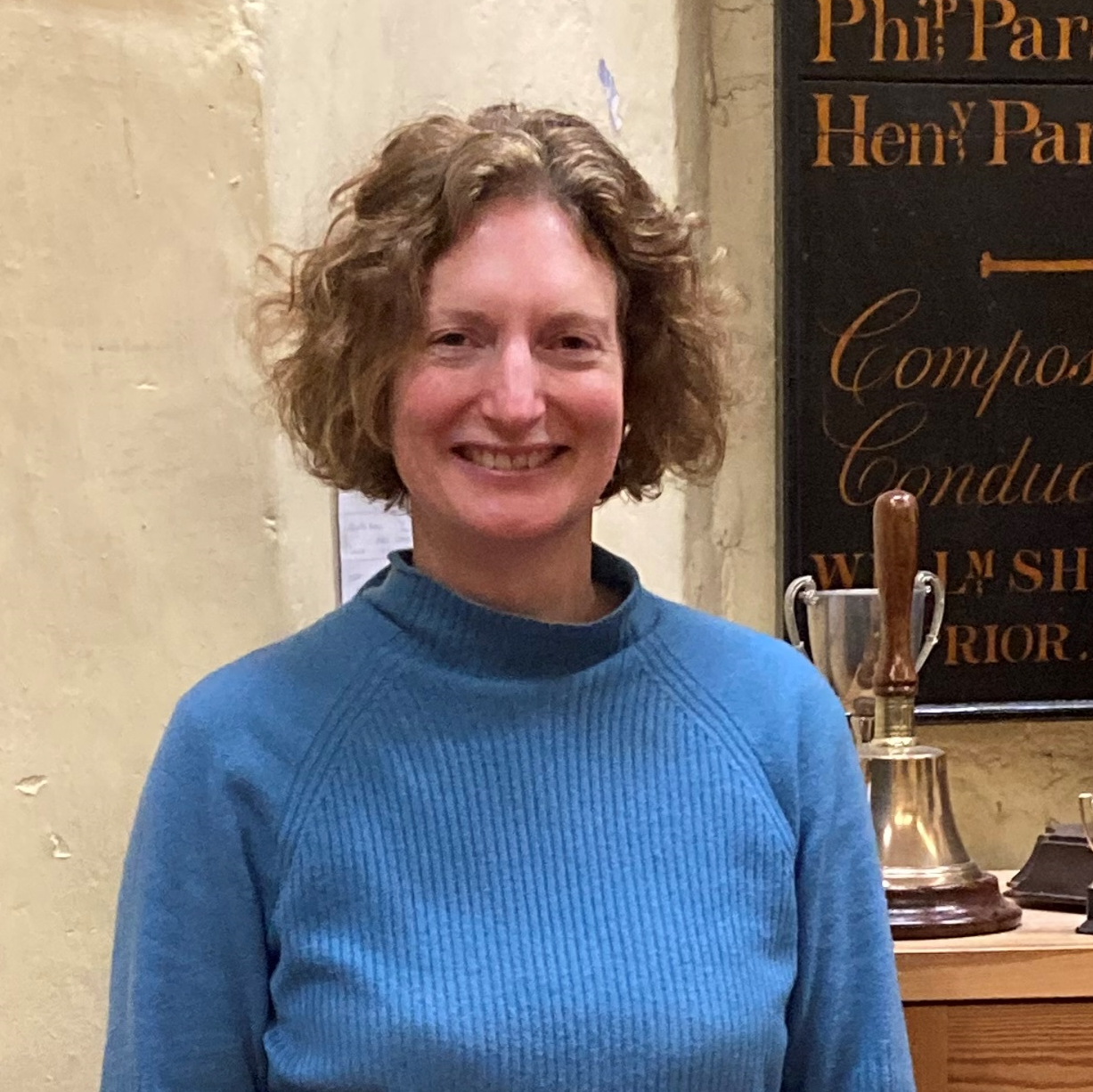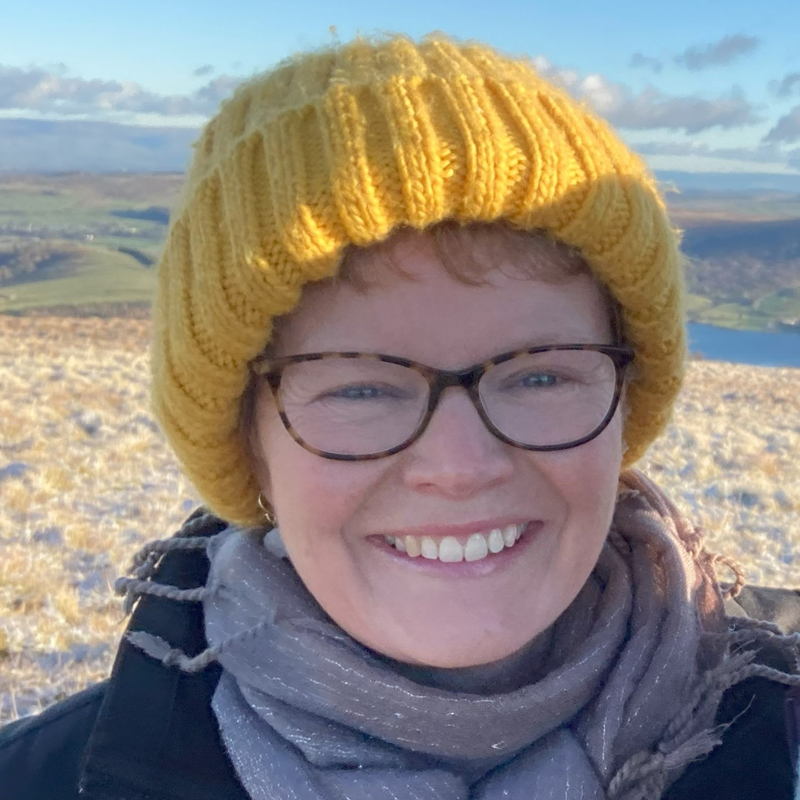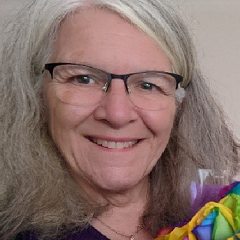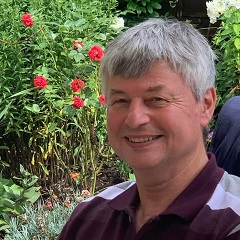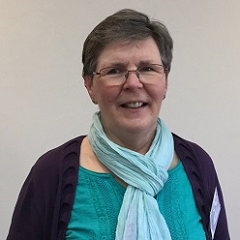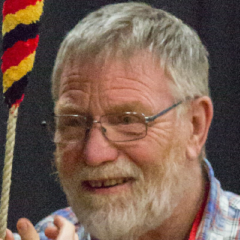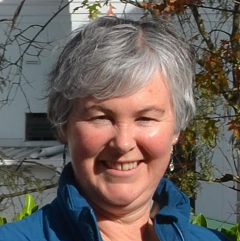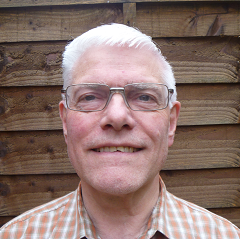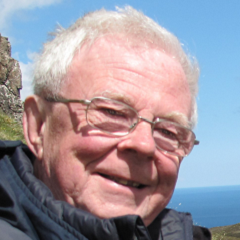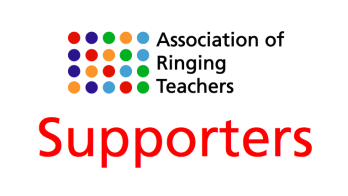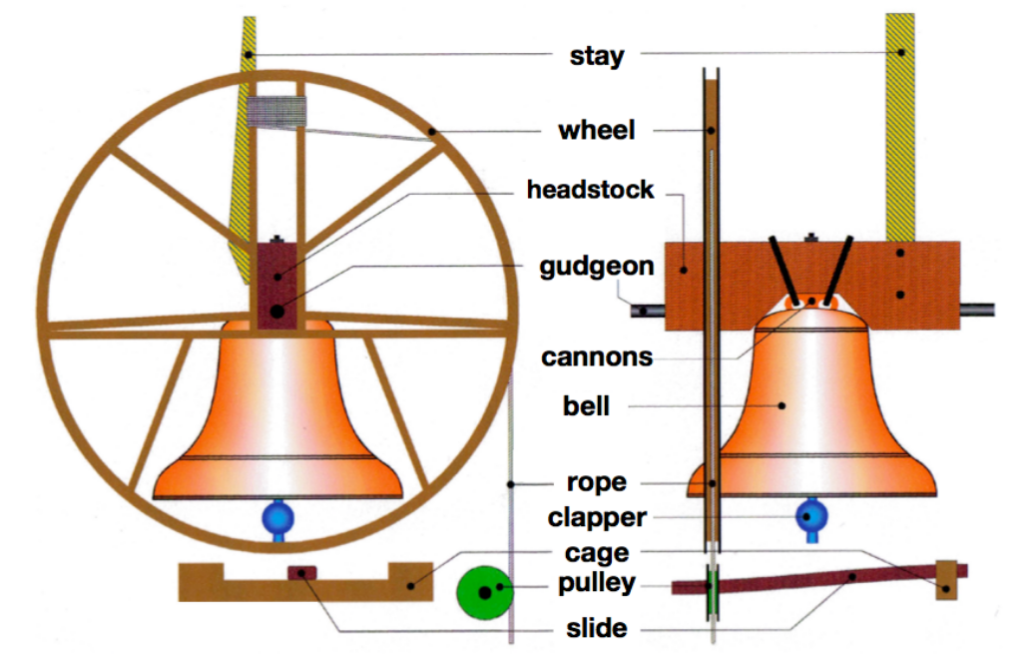John Martin and I moved into the village of Uffculme, on the Devon/Somerset border in spring 2022. We ring at a 21cwt 8, our lightest bell being 5cwt. The bells are hung on two levels, which means that only two bells are easily accessible to tie to use for tied-bell practices. We started teaching new ringers in September 2022, starting two new learners at a time. A number have dropped out for various reasons, but four have kept going. Learners 1 & 2 rang in the two bands we entered in a local striking competition this summer, and we are currently introducing learners 3 & 4 to ringing rounds. We have been wanting to attend the ART Module 2F for a while now, but found our diary was already full when local ART courses were scheduled. We decided to attend a course further afield and booked onto a course run by Roger Booth in the Salisbury Diocesan Guild at Edington Priory, which is near the famous Westbury White Horse. It turned out to be a good idea to travel for the training, as we had opportunities to listen to and share ideas with ringers from further afield, made some new ringing contacts, and met up with some ringing friends and acquaintances we’ve not seen for a while.
Edington Priory and Ringing Centre is home to a 24cwt ring of 10 bells. The ringing chamber is accessed from the roof and was sufficiently large to comfortably seat the 14 students and observers attending. The front six bells were tied for the course with the simulator being used to produce realistic bell sounds. A large 40” digital screen on the wall displayed the simulator computer screen and Roger’s presentation material. At the back of the priory, Julia provided lunch and refreshments throughout the day. Afternoon tea was served with mince-pies and highly recommended white-chocolate Rocky Road bites.
At the early stages of ringing there are lots of aspects for a new ringer to take on board. As seasoned ringers, we can forget how difficult this stage is. However, so many times, we go along to Branch of Guild training courses and students attending haven’t got sufficient foundation skills under their belt to ring plain hunt or to ring on unfamiliar bells. We perhaps need to be holding more training sessions at Branch and Guild level to address these problems. Some years ago, ART decided to split its module 2 course so there is a separate course to focus on the early foundation skills to develop prior to attempting plain hunt. It’s important give our learners sufficient rope time ringing with other people, so they achieve a level where they can ring consistently, gaining the confidence and spare headspace to take on board other aspects, such as listening, striking, looking around, manoeuvring their bell, understanding their place in the change and awareness of other bells in the change.
Attendees on our course varied from people who were relatively new to ringing, to some very experienced tower captains. Roger presented the course exceptionally well. His information and instructions were clear, slides were well presented, he answered all questions, and he allowed us time to discuss as a group. Plenty of strong opinions were held on subjects ranging from whether it was correct to call changes up or down; whether you should leave the word “to” out of a call because it can be confused with bell “two”; what the difference is between a coach and a teacher; whether you stop to put things right, or leave explanations to the end of a ring; to which exercises you give a new ringer who can only just ring rounds.
The course covered lots of material starting with a quick recap on how to make a bell ring faster (catch sally early/ take up rope) or slower (firm or long preceding pull to hold up) moving on to bell control exercises to do with the whole band such as whole pull and stand, call changes, kaleidoscope exercises and some straightforward methods such as Bastow and Cloister doubles where a learner can ring places but the rest of the band ring something a little more interesting. Most of these exercises we are already trying out in our tower. The firing exercise was a new one to us which we will try out. It was also interesting to spend some time thinking about how we explain the benefits of exercises to our learners, and which aspect they focus on. Roger also introduced to some of the resources available in the ART toolkit including “what should I do?” call-change domino cards which we’d like to use with our ringers.
What did John and I take away from the day? We were pleased to see a simulator in action. We are considering holding some away-practices at a neighbouring tower with a simulator, and perhaps installing our own simulator with a dumb-bell. It was assuring to know we are adopting good practice as we use many of the exercises at our practice nights and we will follow the route to becoming assessed for this module. There’s always room for improvement and its always worth attending (or revisiting) teaching courses just to pick up ideas. We’ve come away with extra exercises to put into practice; some thoughts and ideas generated by talking to our fellow course attendees, and we will certainly spend some time looking at the additional resources available to us through ART and the Whiting Society.

